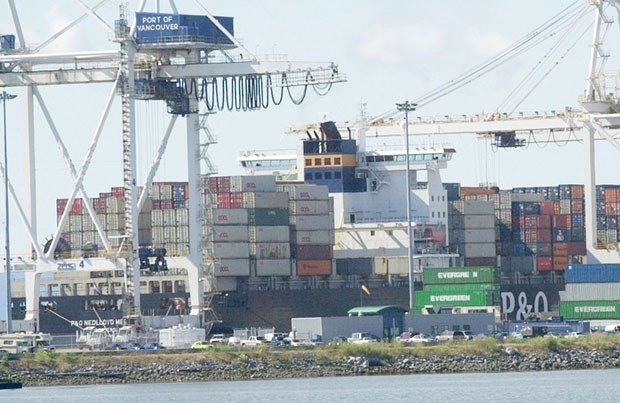Delta continued its push to move container port expansion away from the area at last week's Union of B.C. Municipalities conference.
Civic politicians and senior staff were to meet with provincial ministers and Premier Christy Clark armed with the results of an inland port impact study carried out earlier this year.
"I think it forms a very strong foundation for moving forward," Sean McGill, director of human resources and corporate planning, told Delta council last month.
Delta has been supportive of the concept of inland terminals dating back to 2008 when civic politicians endorsed a motion to support the continued development of a terminal in Ashcroft, a small town in the Interior.
Mayor Lois Jackson spearheaded two meetings last year to look at the potential benefits an inland port would have on the Lower Mainland and was also part of a delegation that visited Ashcroft last April.
In March, council approved spending up to $45,000 US to hire a California-based company to carry out an inland port impact study.
The results of the study, which were revealed last month, demonstrate the construction of an inland terminal would have significant traffic, economic, social and environmental benefits.
According to the study, which was completed by a team of experts from Cargo Velocity Inc., CH2M Hill and InterVistas, moving port expansion inland would result in 360 to 1,080 fewer truck trips per day - 217,000 to 650,000 annually - to and from Roberts Bank by 2031. Currently, about 60 per cent of all westbound rail containers are empty and, due to limited storage space, many are delivered to Deltaport and then transferred to another location, requiring two to three container truck transfers.
The study found that an inland terminal would be able to ship full containers via rail to Port Metro Vancouver, eliminating the extra transfers. By 2031, this would mean avoiding 140,000 truck trips annually in the Lower Mainland.
The study also found that an inland port would reduce pressure to develop agricultural land near Roberts Bank, attract investment and generate jobs and economic development in the Ashcroft area, and reduce carbon emissions.
For over a year, civic politicians have been lobbying in conjunction with their counterparts in Ashcroft to locate container expansion in the Interior community, which wants the business.
Delta has continued to put forward a business case for the plan, holding a meeting earlier this summer at municipal hall.
The Ashcroft site is being pitched because it has the necessary industrial zoning in place, Canadian National and Canadian Pacific rail lines running through it, as well as the support of neighbouring communities.
In May, an expansion project at the Ashcroft
Terminal was completed, aimed at improving the flow of goods by rail.
However, Port Metro Vancouver has made it clear it's not interested in Ashcroft.
In a report last year by Avison Young, Tom Corsie, vice-president of real estate for PMV, rejected the proposal.
"It is our view that a new container terminal at Roberts Bank (Terminal 2) is the most efficient way to provide additional long-term capacity to this growing sector. PMV is currently working with the proponents of the Ashcroft facility, but it is unlikely the economic development activity they are pursuing will involve the development of an inland container terminal."
A major component of the port's plan to handle a projected growth in container traffic remains Terminal 2, a proposed three-berth terminal that would be constructed adjacent to the existing Deltaport container terminal at Roberts Bank.
The port authority has already unveiled a preliminary design for T2 and is working on a number of field studies in preparation for an application. It will likely submit an environmental impact statement to Ottawa by the end of the year, which would trigger a lengthy environmental review.



